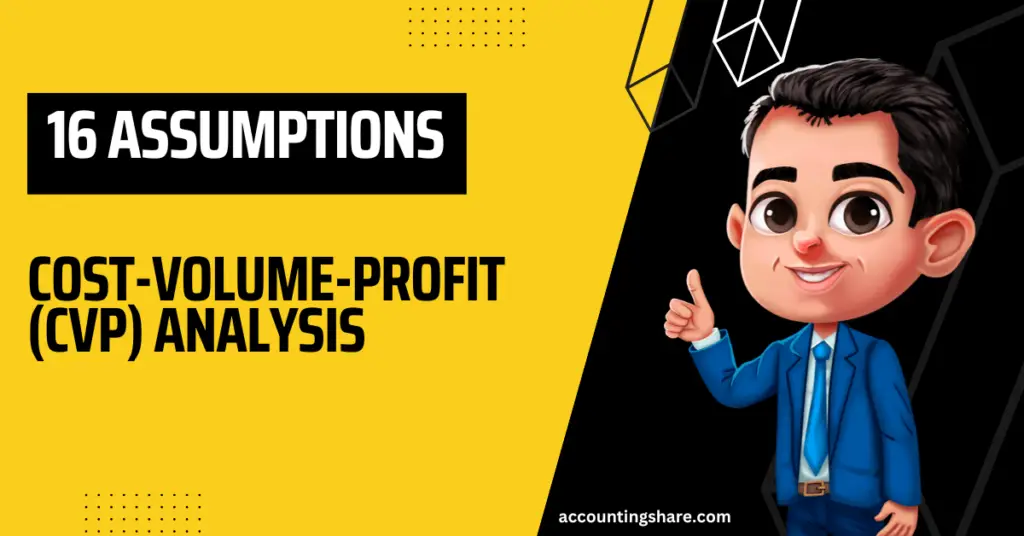The first step in cost-volume-profit analysis is to determine the sales price of each unit produced or sold. This can be calculated by dividing the total revenue by the total units sold or produced. Cost-Volume-Profit (CVP) Analysis is an essential tool for managers to make informed decisions regarding the profitability of their business.
What Assumptions Does Cost-Volume-Profit (CVP) Analysis Make?
An organization may use CVP analysis as a planning tool when the management wants to find out the desired profit when the sales volume is known. Cost-volume-profit analysis can be used in a few different ways to help businesses make decisions and for investors to understand why those decisions were made. Contribution margin is the amount by which revenue exceeds the variable costs of producing that revenue.
How do you calculate CVP analysis?
It can help them to allocate their resources efficiently, focus on the best areas of their business and minimize waste. By keeping these watch-outs in mind, accountants can perform accurate and reliable CVP analysis and make informed decisions about pricing, product mix, and resource allocation. If the store sells $10,000 worth of merchandise in a month, the contribution margin would be zero, and it could not cover its fixed costs.
Cost Volume Profit Analysis for Multiple Products
It is assumed within this analysis that costs can be strictly categorized into fixed and variable costs. Fixed costs, as the term suggests, do not change with the level of production or sales. In simple terms, this special income statement is like a map that helps businesses navigate through selling products and making money. This is especially helpful when figuring out how to deal with changes like higher costs for materials or deciding on the best prices for their products. CVP analysis, in short, enables establishing relationship between cost, volume of products, and profit margin.
- Each component is studied about one another to determine how changes in any one area will affect overall profitability.
- As a control technique, CVP analysis is used to measure the performance of the different departments in a company.
- Those products that generate higher profit margins for a given volume can be prioritized, thereby shaping the overall product strategy.
- By analyzing the impact of different sales prices on contribution margin and profitability, businesses can determine the optimal price point for their products or services.
CVP analysis is used to determine whether there is an economic justification for a product to be manufactured. The decision maker could then compare the product’s sales projections cvp meaning in business to the target sales volume to see if it is worth manufacturing. The contribution margin is part of the formula used to determine the breakeven point of sales.
What is cost volume profit CVP analysis?
CVP analysis shows the volume needed at different prices to reach profit goals. For information pertaining to the registration status of 11 Financial, please contact the state securities regulators for those states in which 11 Financial maintains a registration filing. However, very few managers know about the profit structure in their own company or the basic elements that determine the profit structure. Plugging into your financial reports ensures this valuable data is updated in real-time. The above graph shows the break-even point is between 2000 and 3000 units sold.
Break-even analysis only identifies the sales volume required to break even. It is a subset of CVP analysis focused on finding a situation where total revenue equals total costs, resulting in zero profit or loss. CVP analysis depends on assumptions about sales mix, which is the proportion of different products an organization sells. Companies should analyze their sales mix to determine which products are more profitable and then focus on marketing and production to maximize profits.
In conclusion, Cost-Volume-Profit (CVP) Analysis is essential for businesses to understand their profit structure and make informed decisions to maximize profits. CVP analysis can be used to make informed decisions about pricing, product mix, and resource allocation. If the company were to increase the sales price of its widgets to $12, the contribution margin would increase to $7 per widget. This means that for every widget sold, the company would have a contribution margin of $7, which is $2 higher than its current contribution margin of $5. The contribution margin ratio is determined by dividing the contribution margin by total sales.



